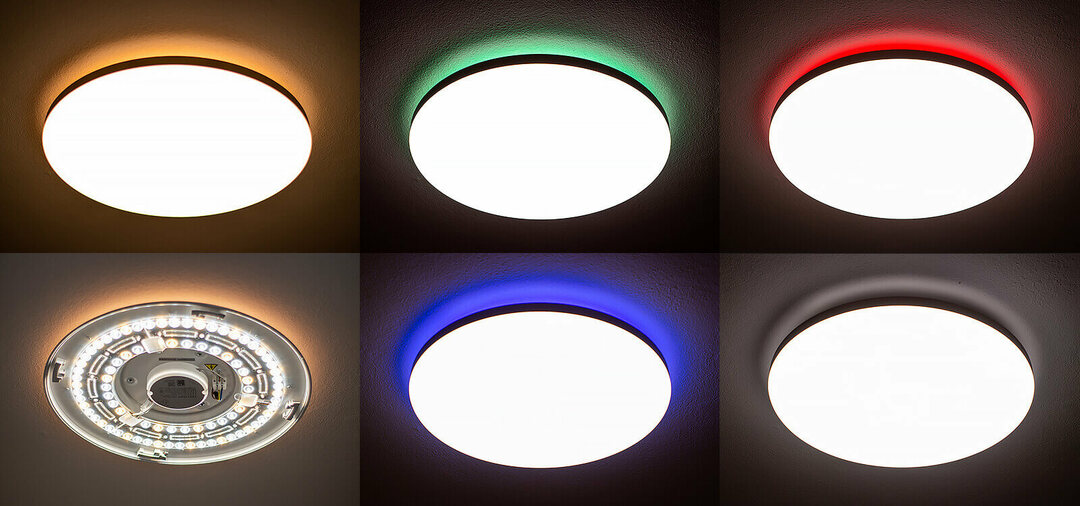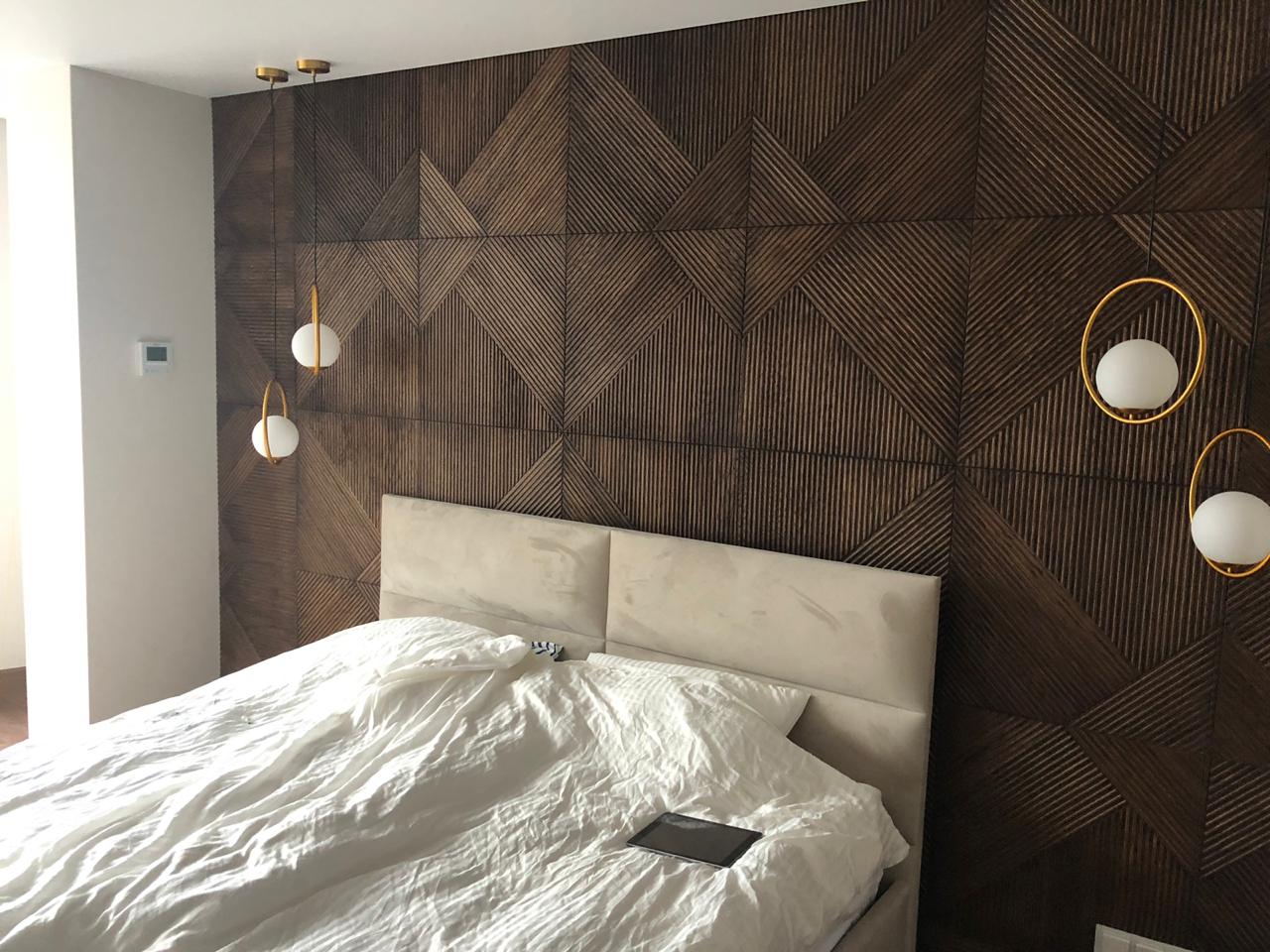Building with aerated concrete blocks (modules) is a popular choice for creating durable and energy-efficient buildings. However, to achieve optimal results, it is necessary to pay attention to the details of the installation process. One of the important aspects is the consumption of glue for aerated concrete blocks.
Proper adhesive application is key to successful installation and a secure connection. The article will discuss factors that affect material costs, as well as methods and formulas for calculating the required amount of masonry mixture.
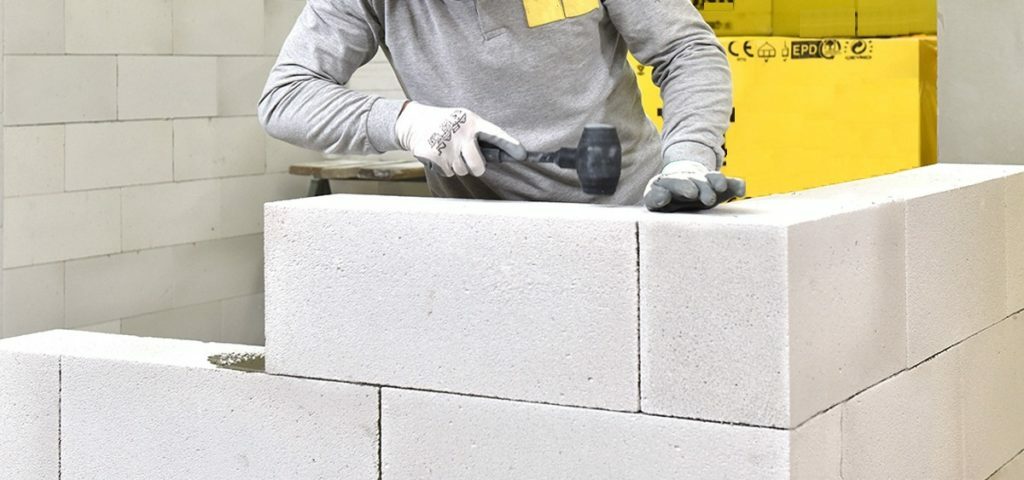
Content:
- What determines glue consumption?
- Why do you need to know how much mixture you will need?
- What should be the optimal flow rate?
- Calculation of adhesive mass for laying gas blocks
- Per 1 square meter
- Per 1 cubic meter
- Payment procedure
- Explanations for calculations
- Calculation formula
- Calculation example
- What determines the difference in consumption figures?
- Secrets of economical spending
- Consumption of masonry mixture
- Popular adhesives
- Ceresit ct 21
- Perel Blokus
- Baumit pbk
- Kreisel
- Aeroc
- Kamix
- Henkel
- Bonolit
- Volma
- Insi block
- Kreps
- Real
- Prestige
- Tips for choosing adhesive mixtures
- Conclusion
What determines glue consumption?
The adhesive consumption for aerated concrete blocks per 1m³ may vary depending on various factors, including the type of adhesive, the size and density of the aerated concrete blocks, and the manufacturer's requirements. As a rule, glue consumption is indicated on the packaging or in the technical description of the adhesive composition.
- Firstly, it is important to consider the size. Standard blocks have dimensions of 200x300x400 mm, but there may be other parameters. Large units require increased resources to ensure reliable installation.
- Secondly, the thickness of the glue layer also affects consumption. It is recommended to apply a layer approximately 3-5 mm thick. A thicker layer may require more material, but this increases the risk of warping or misalignment.
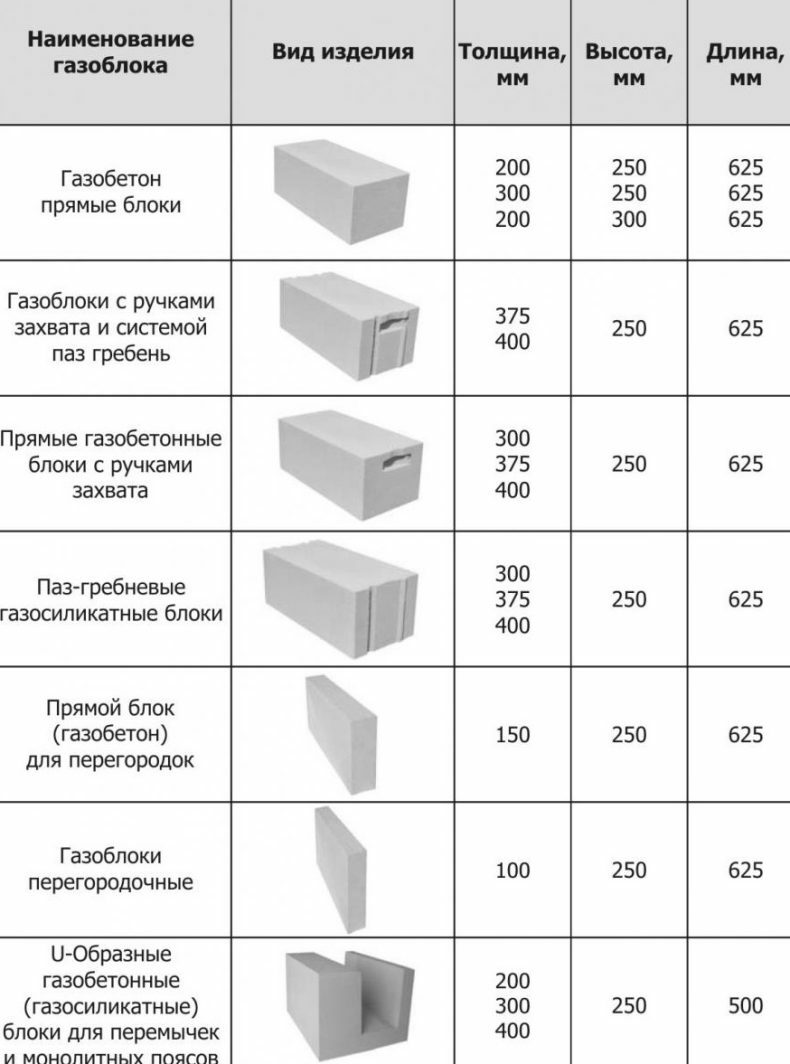
Why do you need to know how much mixture you will need?
Knowing your exact costs provides several important benefits:
- Purchase the required amount of material. This eliminates the shortage of glue during the installation process and saves time that will have to be spent on additional purchases.
- Optimal consumption ensures strong and reliable fastening of the blocks, which increases the quality and durability of the structure.
- Correct calculation of the mixture allows you to avoid waste of material and reduce costs.
What should be the optimal flow rate?
The optimal glue consumption should be sufficient to ensure reliable fastening of the blocks, but at the same time minimal. Too little will result in insufficient bond strength, while too much will result in unnecessary costs. Therefore, it is important to correctly calculate the amount of adhesive mass required.
When choosing adhesive for aerated blocks, in addition to price and consumption, it is also important to take into account its quality, compliance with the requirements and recommendations of the manufacturer, adhesion to the surface of the aerated block, and drying time.
- Glue for gas blocks in the middle price segment: The price for a 25 kg package can range from approximately 500 to 1,500 rubles, depending on the manufacturer and region.
- Premium adhesive for aerocrete blocks: The price for a 25 kg package varies from 1,500 to 3,000 rubles and more, depending on the brand and quality of the product.
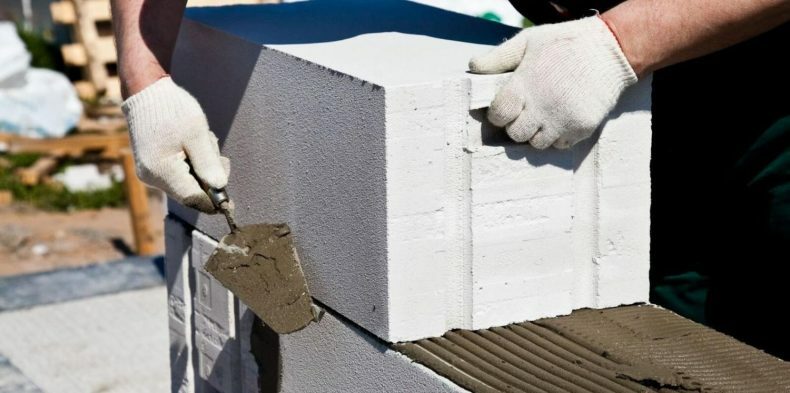
Calculation of adhesive mass for laying gas blocks
Per 1 square meter
To calculate the glue consumption per 1 sq. m of aerated block surface, the following formula is used: required amount of glue = surface area * thickness of the glue layer.
For example, for building modules measuring 200x300x400 mm and a layer 5 mm thick, the surface area is 0.34 square meters. meters. Thus, costs per 1 sq. m will be equal to 0.34 * 0.005 = 0.0017 cubic meters or 1.7 liters.
Per 1 cubic meter
When asked how much aerated concrete adhesive is needed per 1 m³, the answer is as follows: approximately 1.5 to 1.6 kg. To calculate the cost of the product per 1 cubic meter of aerated concrete, you need to take into account that the standard adhesive layer has a thickness of about 3-5 mm. Costs per 1 cubic meter will depend on the thickness of the layer. For example, with a layer thickness of 4 mm, the glue consumption per 1 cubic meter of aerated concrete will be about 0.004 cubic meters or 4 liters.
Payment procedure
To determine the adhesive consumption for aerated concrete modules, use the following procedure:
- Determine the dimensions of the building components to be used.
- Set the thickness of the adhesive layer based on the manufacturer’s recommendations and installation requirements.
- Calculate the surface area of the block using the formula: surface area = (width + height) * 2 + (width + length) * 2 + (height + length) * 2.
- Using the formula, calculate the glue consumption per 1 square meter or 1 cubic meter of aerated concrete, taking into account the thickness of the adhesive layer.
- Multiply the adhesive consumption by the total surface area of the modules or by the volume of aerated concrete to obtain the total amount of adhesive mass required.
Explanations for calculations
When determining product costs for aerated concrete blocks, it is important to consider some additional factors:
- It is recommended to purchase glue in bags that indicate the amount of material in kilograms. To carry out calculations, you will need to convert liters of glue into kilograms, knowing its density.
- Please remember that product consumption may vary depending on installation conditions, block surface quality and installation technique. If installation is inaccurate or does not comply with the manufacturer’s recommendations, costs may differ from the calculated value upward.

Calculation formula
To calculate how much glue is needed per cube of aerated concrete, you can use the following formula:
Glue consumption = Block surface area × Number of block surfaces × Glue layer thickness × Glue density
The density of the glue is always indicated on the packaging. In the formula, the area of the block is indicated in square meters, the thickness of the adhesive layer is in meters, and the density of the adhesive is in kilograms per cubic meter.
Calculation example
- Let's say you have aerated concrete blocks measuring 600 mm × 200 mm × 200 mm, and you plan to apply a layer of adhesive 5 mm thick. Suppose the manufacturer recommends glue consumption per square meter. m is 4 kg, and the glue density is 1800 kg/m³.
- Let's calculate the surface area of one block: 0.6 m (length) × 0.2 m (width) × 6 (number of block surfaces) = 0.72 m².
- Calculation of glue consumption per 1 square meter: 4 kg/m² (recommended consumption) × 0.72 m² = 2.88 kg.
- Calculation of glue consumption per 1 cubic meter: 2.88 kg (consumption per 1 m²) × 5 mm (layer thickness) × 1000 (conversion of mm to meters) = 14.4 kg/m³.
Thus, to lay aerated concrete blocks of the specified sizes with an adhesive layer thickness of 5 mm, you will need approximately 2.88 kg of glue per 1 m² of block surface or 14.4 kg of glue per 1 m³ of blocks.
What determines the difference in consumption figures?
Various factors can influence the difference in adhesive consumption figures for aerated concrete blocks. Main factors to consider when calculating:
- Block sizes. They have different surface areas, which affects costs. Larger ones will require more coating mixture.
- Layer thickness. Increasing the thickness of the adhesive layer leads to increased product consumption. However, it is worth considering that too thick a layer can lead to incorrect alignment of the modules and deteriorate the quality of installation.
- Surface quality of building components. Blocks come in varying degrees of roughness. A rougher surface requires more material to ensure a strong bond between the blocks.
- Laying technique. The skill and experience of the craftsman can also affect costs. A qualified installer can use resources more efficiently and achieve lower costs.
Taking these factors into account, it is necessary to carry out individual calculations for each specific case, taking into account the dimensions of the structural slabs and the manufacturer's requirements.
Secrets of economical spending
There are several secrets that will help reduce costs when installing aerated concrete blocks:
- Precise dosing. Use a calculator or special tables provided by the manufacturer to accurately calculate the required amount of product. Avoid excess or deficiency by following dosage recommendations.
- Proper surface preparation. Make sure that the surface of the blocks is free of dust, oil or other contaminants. High-quality surface preparation requires less material.
- Uniform application using a notched trowel saves material and ensures proper distribution of adhesive force.
- Optimal layer thickness. Follow the manufacturer's recommendations for optimal layer thickness. Layer thickness within the recommended range will help achieve reliable adhesion with minimal consumption.
Consumption of masonry mixture
It is important to take into account the consumption of masonry mixture when installing aerated concrete modules. The calculation of masonry mixture consumption can be carried out separately from the calculation of glue costs. There is a wide selection of masonry mixtures designed specifically for aerated concrete blocks from different manufacturers. Consumption for sibit consumption per m³ is 25 kg per cubic meter with a glue joint thickness of no more than 2 mm.
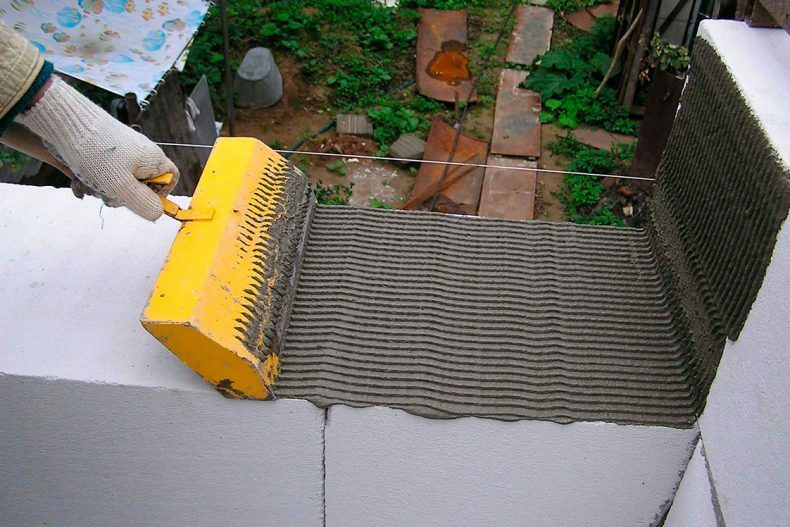
Popular adhesives
Ceresit ct 21
Ceresit ct 21 is a high-quality product for laying gas silicate blocks with certain characteristics.
Let's look at some of them:
- Amount of mixing water. To prepare 1 kg of Ceresit ct 21 glue, approximately 0.18-0.20 liters of water are required.
- Mobility of the mortar mixture. Ceresit ct 21 has good mobility, which facilitates the process of applying glue to the surface of the blocks.
- Mixture lifetime. Once the mixture is prepared, it remains working for approximately 4 hours.
- Adhesion. Ceresit ct 21 adhesive has high adhesion, reaching values up to 1.5 MPa.
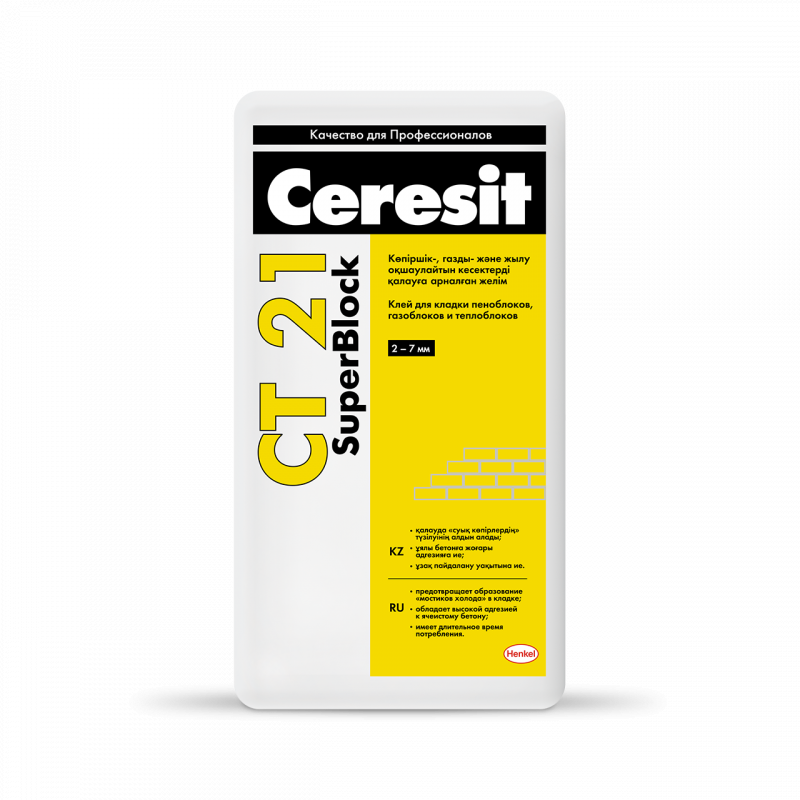
Perel Blokus
- Amount of mixing water. To prepare 1 kg of Perel Blokus glue, it is recommended to use approximately 0.19-0.21 liters of water.
- Mixture lifetime. Within approximately 3-4 hours after mixing.
- Adhesion. A value of up to 1.2 MPa ensures reliable adhesion between blocks, creating a strong and stable masonry.
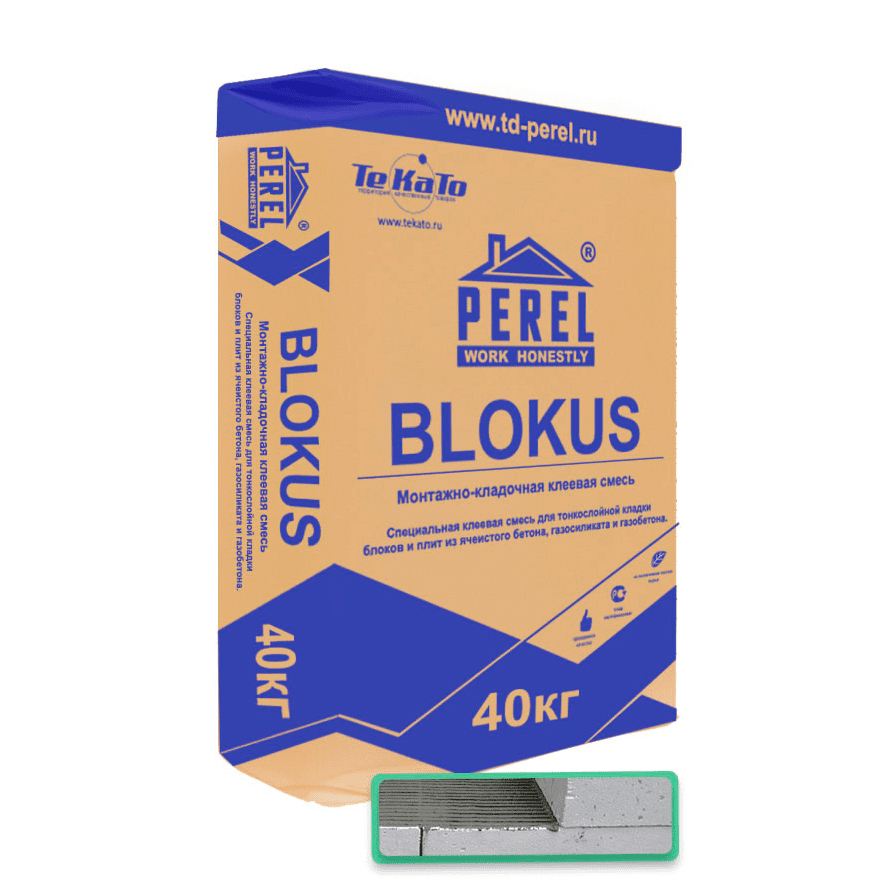
Baumit pbk
Baumit pbk (Professional Quick Adhesive Solution) is one of the adhesive options designed for installing gas silicate blocks.
- Amount of mixing water. To achieve the correct consistency of the mixture, it is recommended to use approximately 0.18-0.20 liters of water per 1 kg of glue.
- Mixture lifetime. The Baumit pbk-based mixture remains working for approximately 2-3 hours after preparation.
- Adhesion. Reaches values up to 1.5 MPa, which guarantees reliable and durable masonry.
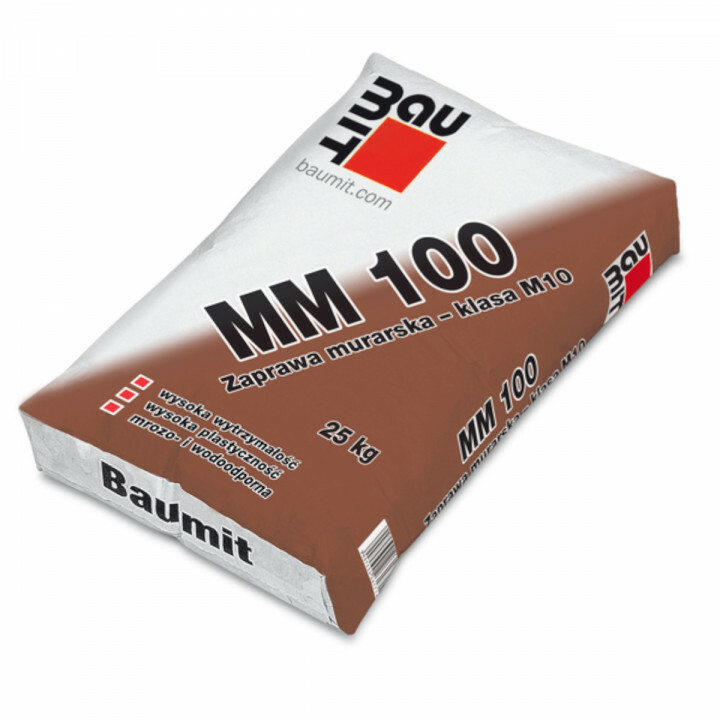
Kreisel
- Amount of mixing water. The ratio of 0.18-0.20 liters of water per 1 kg of Kreisel provides the optimal consistency of the adhesive mixture necessary for reliable fixation of the blocks.
- Mixture lifetime. Once prepared, the Kreisel-based mixture remains workable for approximately 2-3 hours.
- Adhesion. Reaches values up to 1.5 MPa, ensuring strong masonry and stable construction.
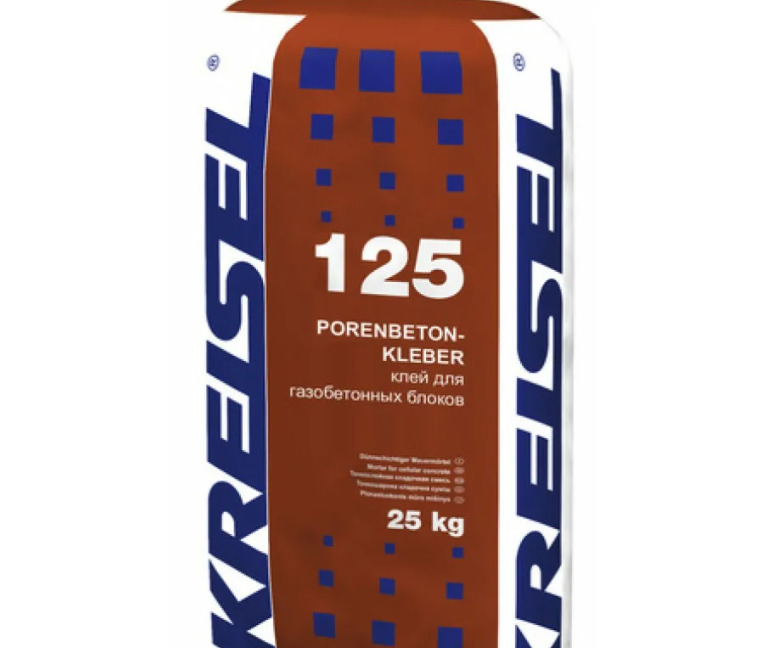
Aeroc
- Amount of mixing water. To prepare 1 kg of Aeroc glue, it is recommended to use about 0.20-0.22 liters of water.
- Mixture lifetime. Once prepared, the Aeroc based mixture remains workable for approximately 2-3 hours.
- Adhesion. Aeroc glue has high adhesion, providing reliable adhesion of blocks and other building materials - about 1.5-2 MPa.

Kamix
- Amount of mixing water. The norm is 0.18-0.20 liters of water for 1 kg of glue, which allows you to achieve the optimal consistency of the adhesive mixture for reliable laying of blocks.
- Mixture lifetime. Approximately 2-3 hours after preparation for laying without the need to constantly update the mixture.
- Adhesion. It is about 2-2.5 MPa. Thanks to this property, a stable and durable structure is created.
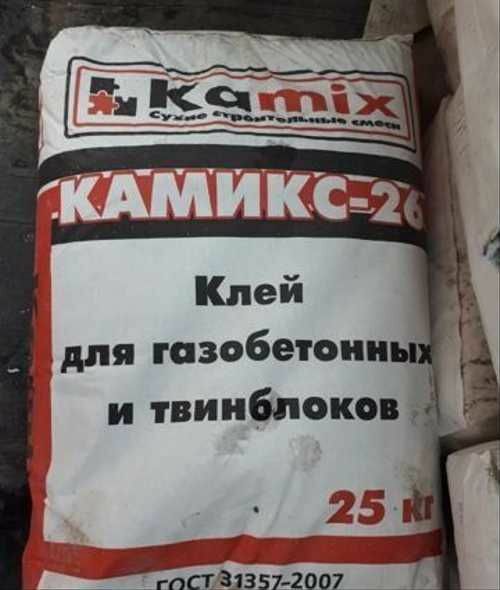
Henkel
Henkel masonry mixture is characterized by high adhesion and strength. One of the most popular products for laying gas silicate blocks is Henkel glue.
- Amount of mixing water. To achieve the optimal consistency of the solution, it is recommended to add about 0.22-0.25 liters of water per 1 kg of Henkel glue.
- Mixture lifetime. Once prepared, the Henkel-based working mixture remains usable for approximately 4 hours. This provides enough time to carry out work without the need to constantly prepare new mixture.
- Adhesion. The brand value is always in the range of 1.5-2 MPa. The adhesive provides strong adhesion, which allows you to create stable and durable walls.
Bonolit
- Amount of mixing water. To prepare 1 kg of Bonolit glue, it is recommended to use about 0.17-0.20 liters of water.
- Mixture lifetime. Once prepared, the Bonolit-based working mixture remains usable for approximately 3-4 hours.
- Adhesion. The average value of 1.5-2 MPa provides strong adhesion, which guarantees the durability and stability of the constructed walls.
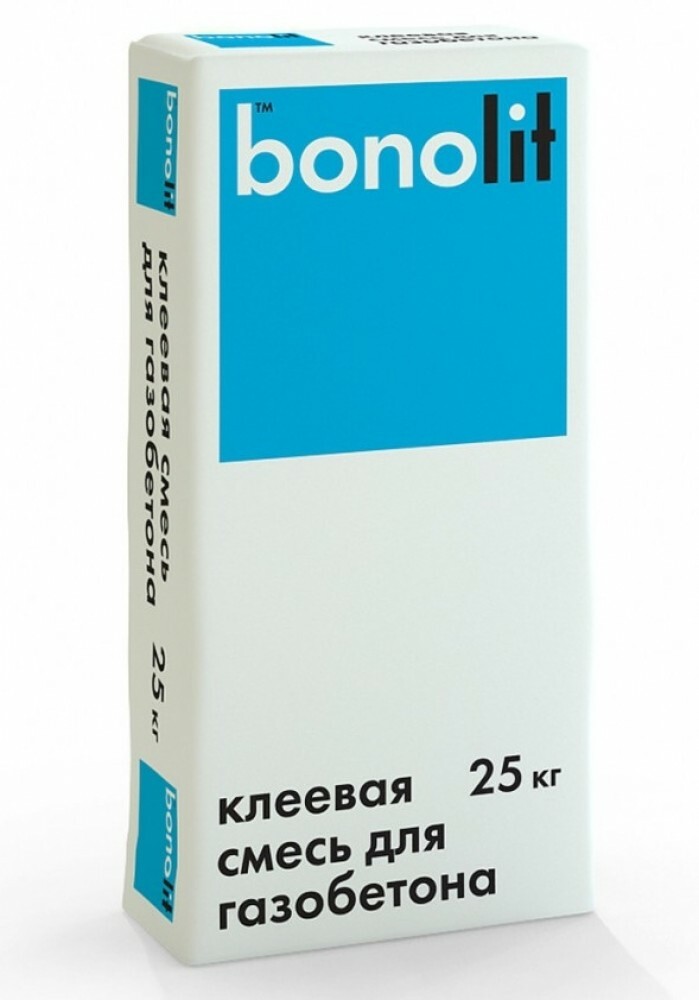
Volma
- Amount of mixing water. To obtain the optimal consistency of the solution, it is recommended to use about 0.22-0.25 liters of water per 1 kg of Volma glue.
- Mixture lifetime. The product is produced with good mobility of the mortar mixture, which facilitates the installation process. The pot life of the mixture is approximately 4-6 hours.
- Adhesion. Volma has high adhesion (1.5-2 MPa), providing strong bonding of gas silicate blocks. It provides reliable adhesion, which guarantees the durability and stability of the constructed walls.
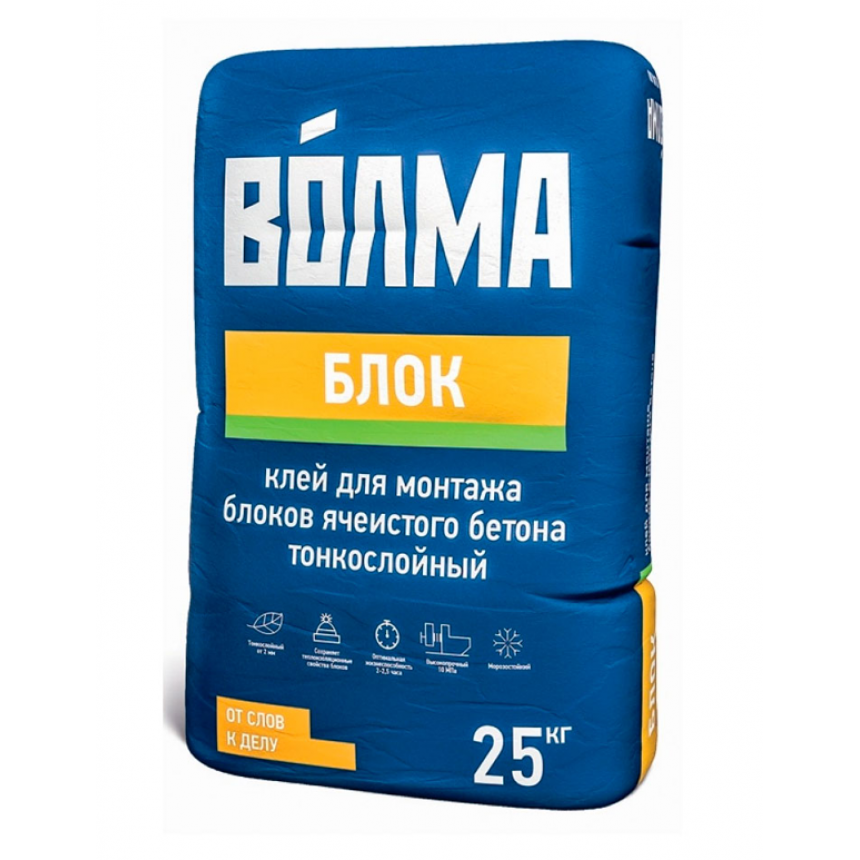
Insi block
- Amount of mixing water. To prepare 1 kg of Insi block, it is recommended to use approximately 0.17-0.19 liters of water. This ensures optimal consistency of the mixture and ensures reliable bonding of gas silicate blocks.
- Mixture lifetime. The pot life of the mixture is about 4-5 hours, which allows enough time for laying the blocks.
- Adhesion is approximately 1.8-2.2 MPa, ensuring a reliable connection between blocks.
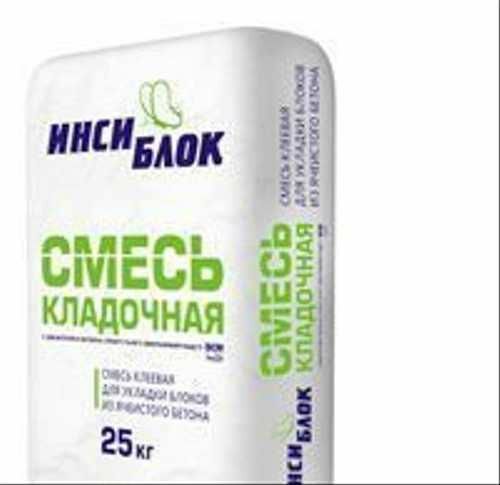
Kreps
- Amount of mixing water. The optimal amount to achieve the correct consistency of the mixture and ensure reliable bonding is 0.18-0.22 liters of water per 1 kg of material.
- The lifetime of the mixture is about 4-6 hours, which may be enough to install modules.
- Adhesion. 1 MPa guarantees the stability and reliability of the structure, and also increases its resistance to external influences.

Real
- Amount of mixing water To prepare 1 kg of Real glue, it is recommended to use approximately 0.2-0.25 liters of water. When used, the consumption of masonry mixture for laying 1 m2 of wall is approximately 15-18 kg.
- Pot life of the mixture: After preparing the mixture, its pot life is about 2-3 hours. During this time, you can carry out work on installing the blocks without the need to re-prepare the mixture.
- The adhesion of Real glue is approximately 2-2.5 MPa, ensuring reliable bonding of the blocks to each other, guarantees the stability and reliability of the structure, and also increases its resistance to external influences factors.
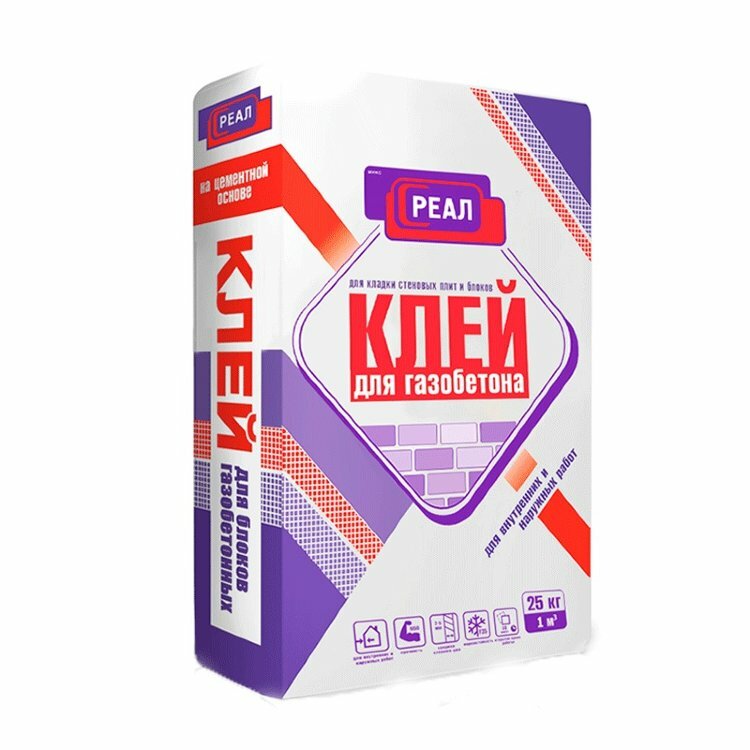
Prestige
- Amount of mixing water. A proportion of 0.2-0.25 liters of water per 1 kg helps to achieve the optimal consistency of the mixture and ensure good adhesion between the blocks.
- The consumption of masonry mixture for laying 1 square meter of wall using Real glue is approximately 12-15 kg.
- Mixture lifetime: 4-6 hours for using the mixed product before it dries.
- The adhesion of "Prestige" is up to approximately 2.5 MPa, providing strong bonding of the blocks.
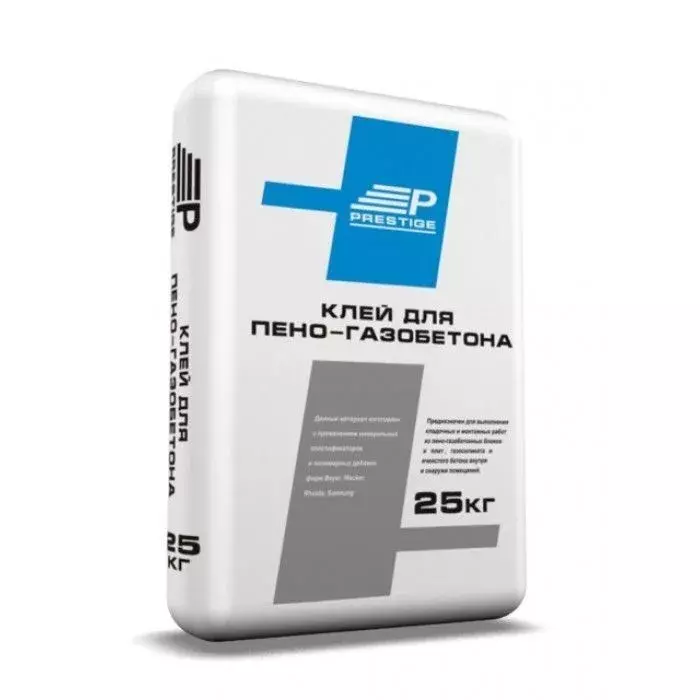
Each masonry mixture manufacturer provides recommendations on the consumption and use of its product. When choosing a masonry mixture, you can always contact the manufacturer to obtain accurate information about the mixture consumption and follow their recommendations.
For example, adhesive consumption for cellular concrete can be about 2-4 kg per square meter or 8-12 kg per m³.
Tips for choosing adhesive mixtures
When choosing adhesive mixtures for aerated concrete blocks, you should follow the following tips:
- Quality and reputation of the manufacturer. Use materials from reliable and well-known manufacturers. Look to reviews and recommendations from other builders to choose a reliable product.
- Compliance. Make sure that the selected product meets the requirements and standards set for construction.
- Manufacturer's recommendations. Read the manufacturer's recommendations regarding glue consumption and application rules. Follow these recommendations for optimal results.
- Price and availability. Compare prices and availability of various offers on the market. Please note that a more expensive product does not always mean better quality.
Conclusion
In conclusion, we can conclude that adhesive consumption for aerated concrete blocks is an important aspect when building using this material.
Correct calculation of the amount of masonry mixture allows not only to optimize the costs of materials, but also to ensure a strong and reliable connection of blocks, which is the basis for high-quality construction. Using the knowledge gained will help you plan and implement construction projects with maximum efficiency and resource savings.
Published 06/18/2023 Updated 06/18/2023 by User Elvira Kasimova

